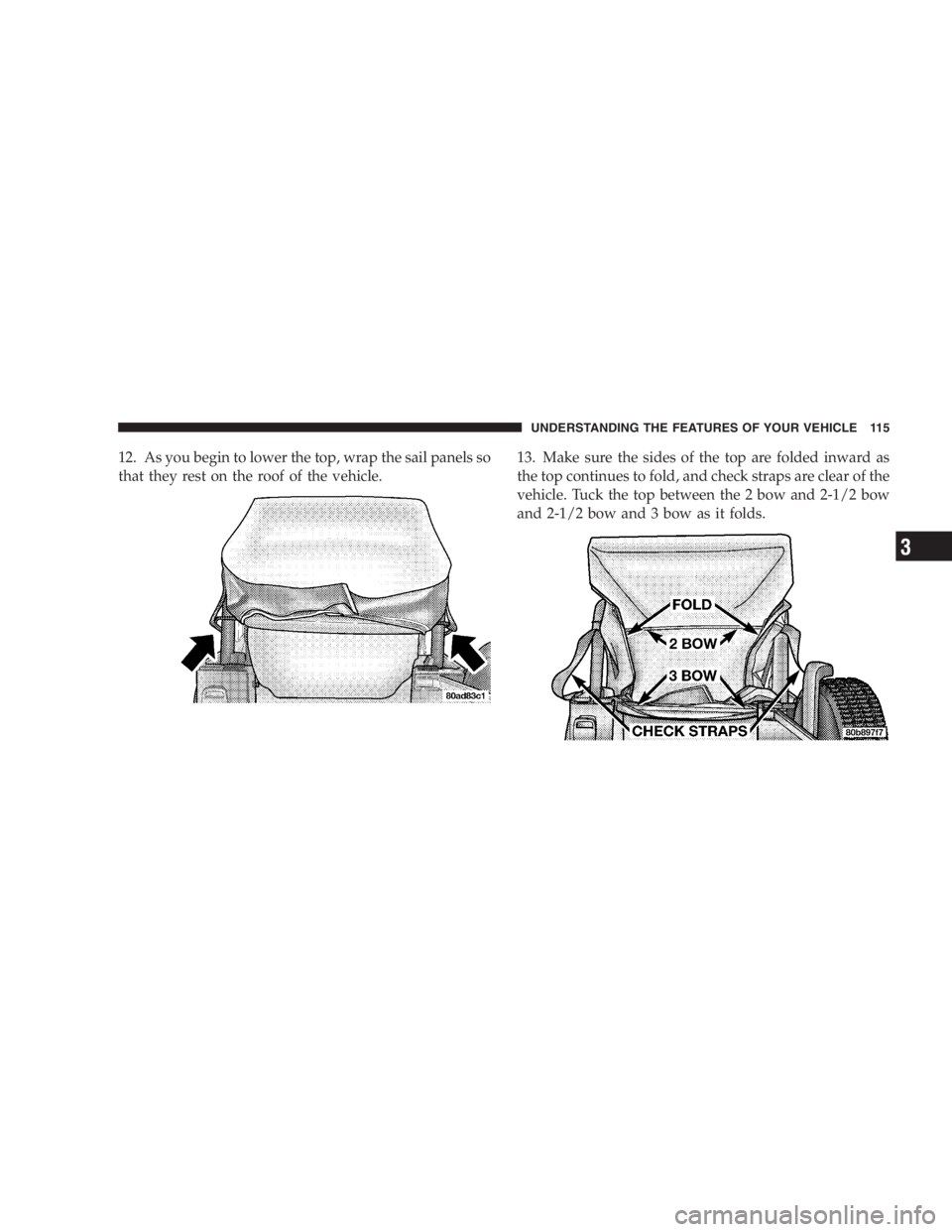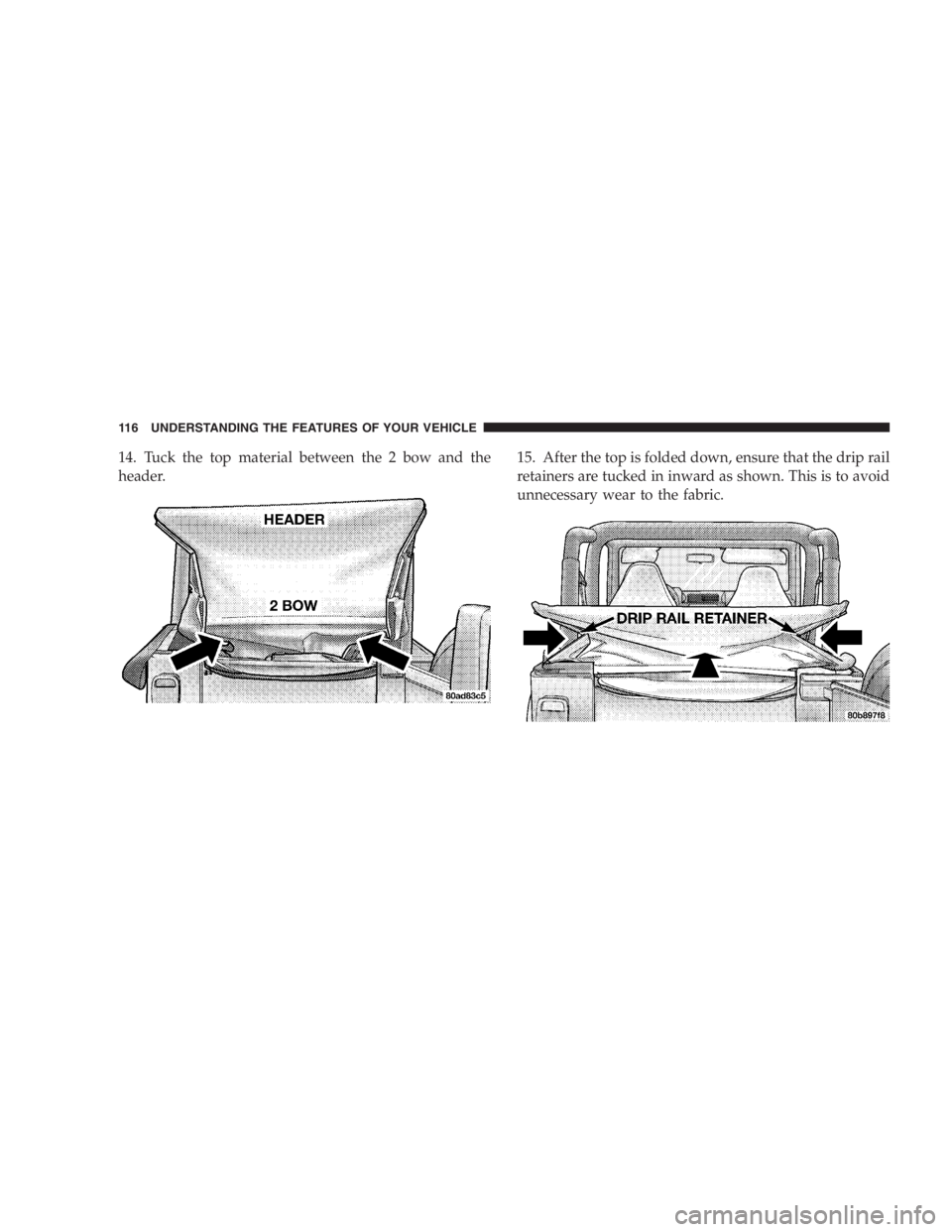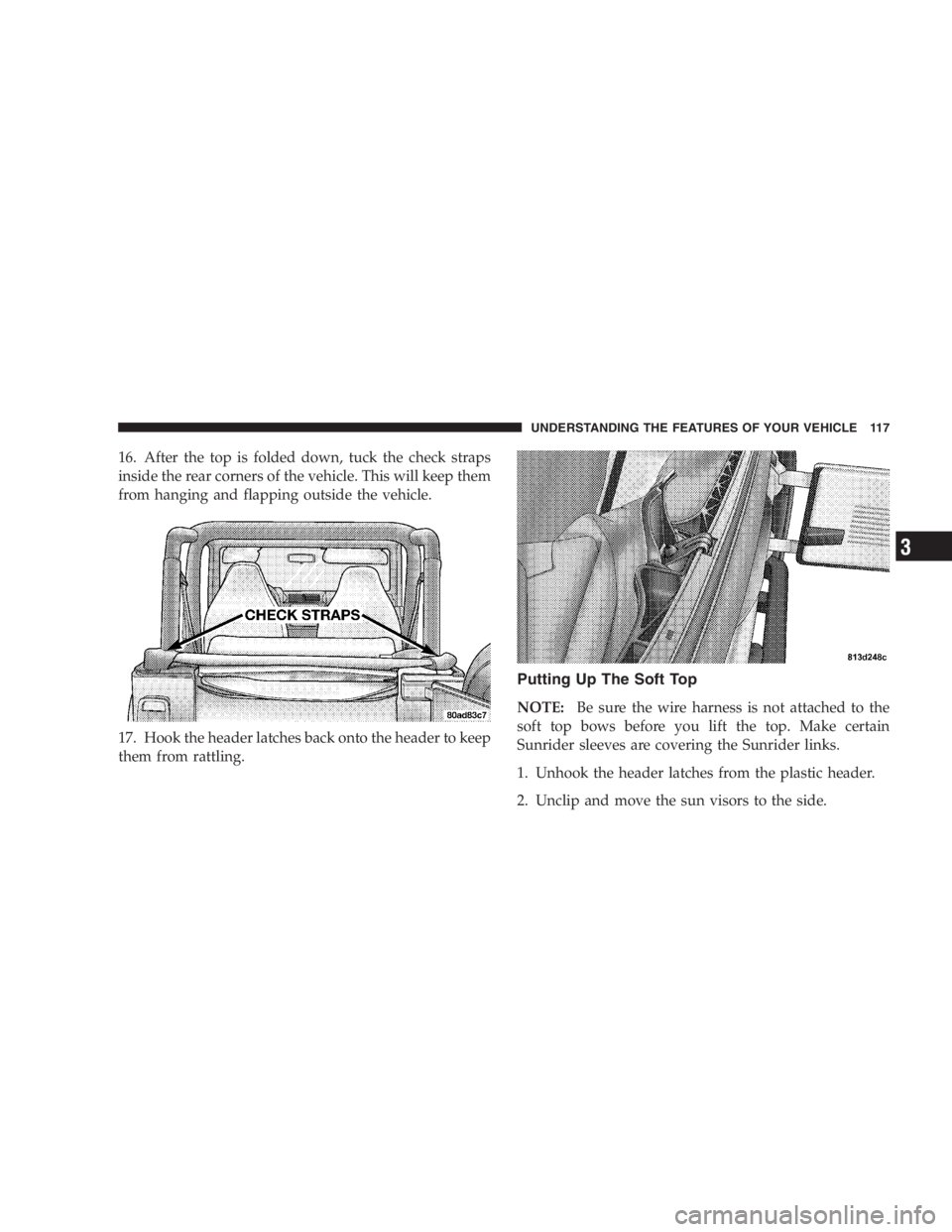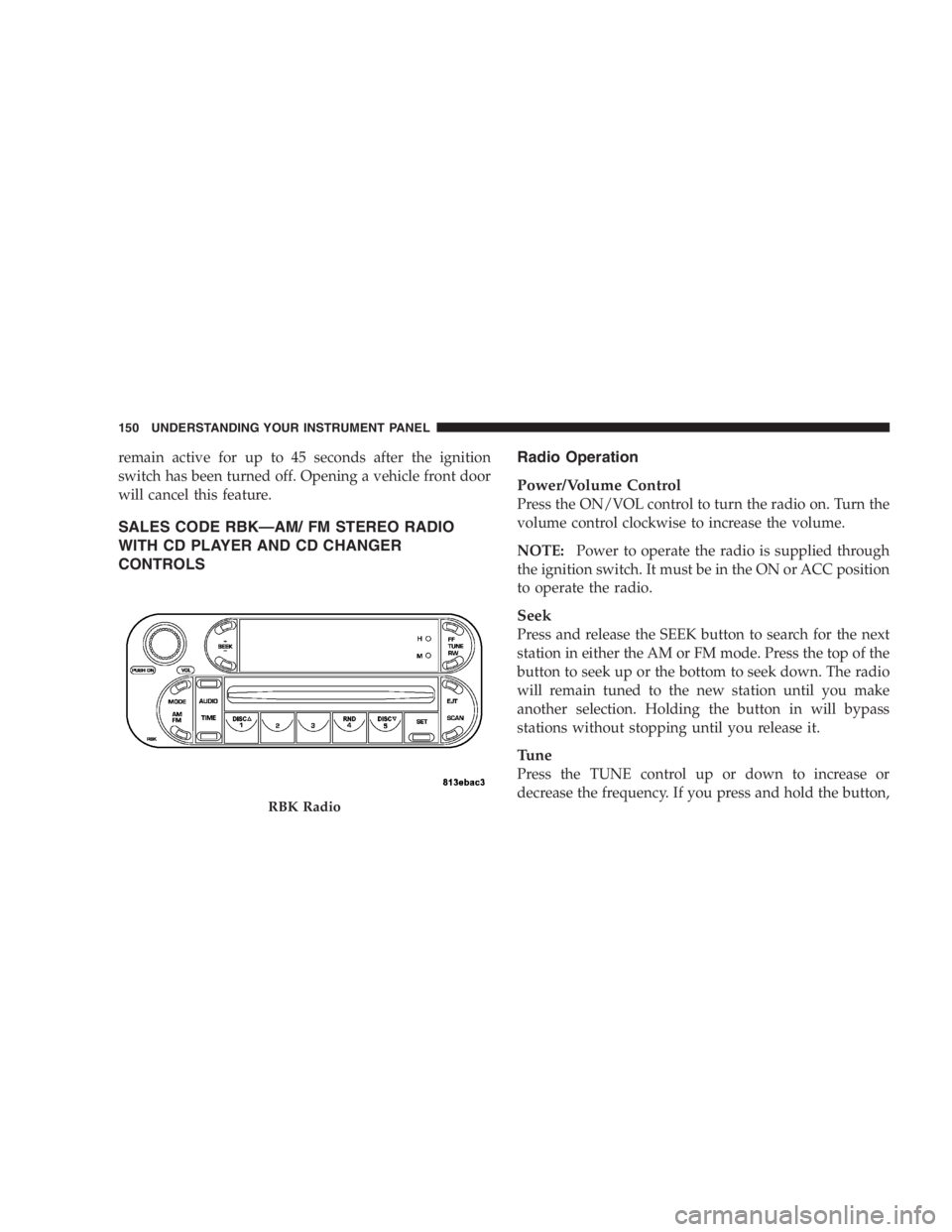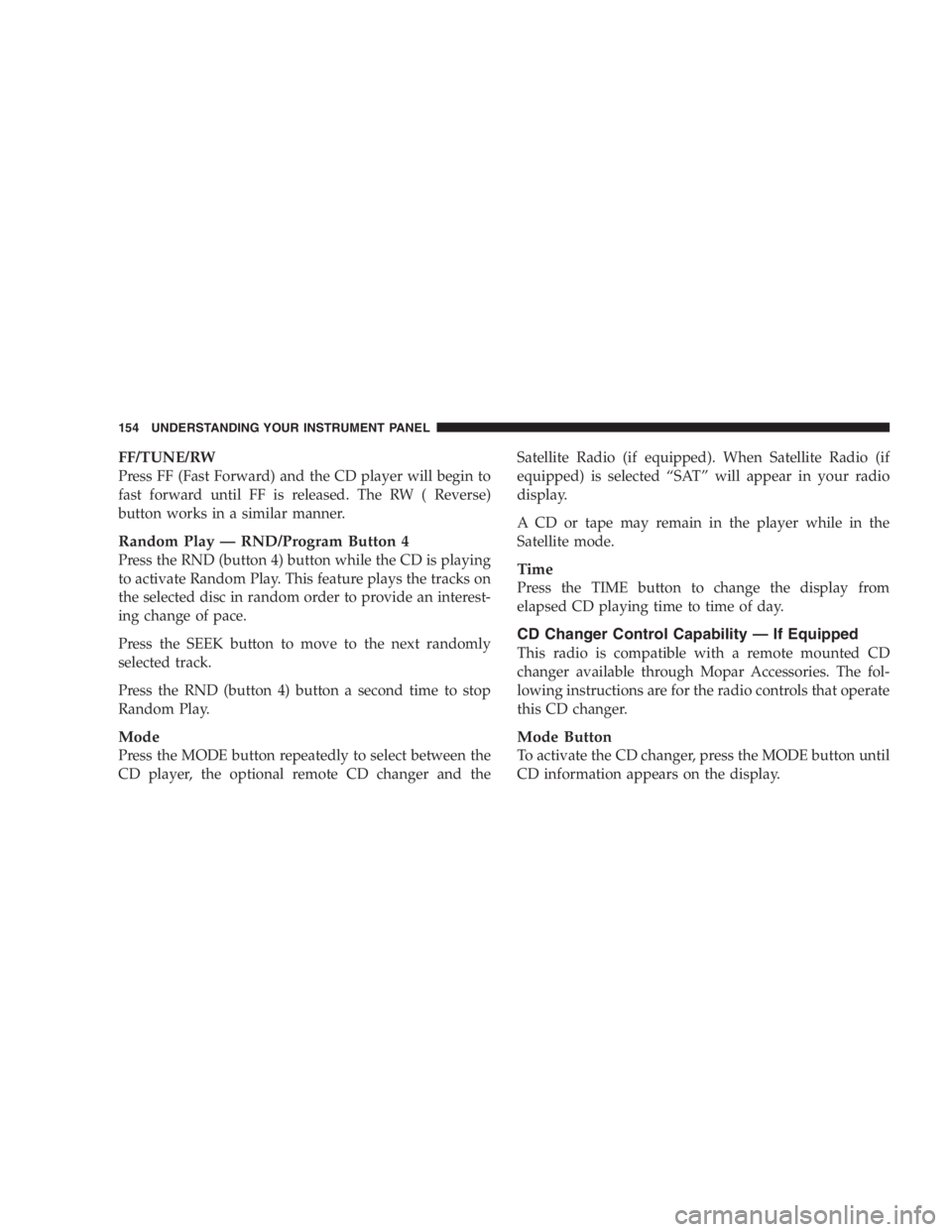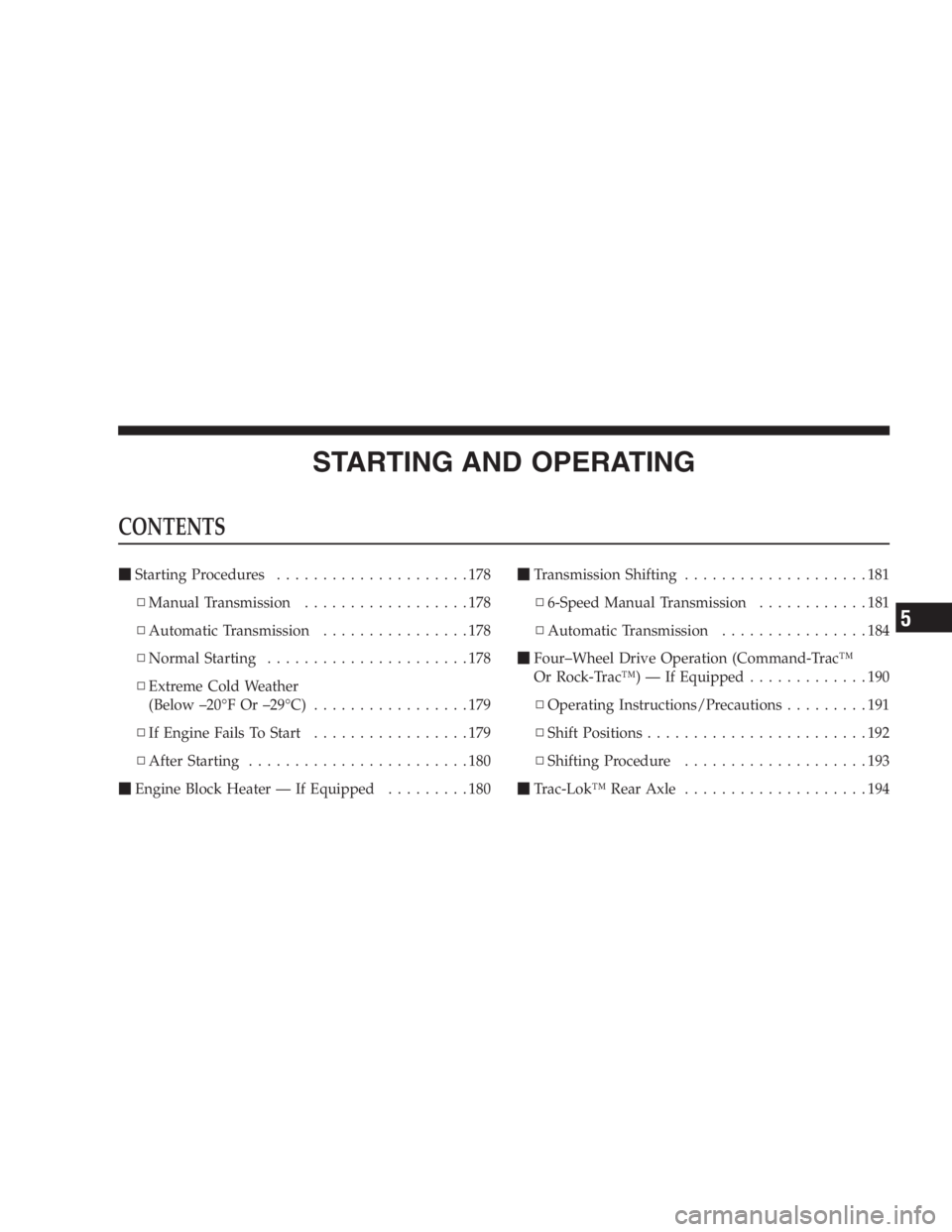JEEP WRANGLER 1999 User Guide
WRANGLER 1999
JEEP
JEEP
https://www.carmanualsonline.info/img/16/56070/w960_56070-0.png
JEEP WRANGLER 1999 User Guide
Page 115 of 1056
Do not leave children or animals inside parked
vehicles in hot weather. Interior heat build up may
cause serious injury or death.
You or others around you could be injured if you
attempt to start the engine with a manual transmis-
sion in gear — your vehicle will move. Remember,
always push the clutch pedal in fully and shift into
N (Neutral) before attempting to start the engine.
Page 116 of 1056
To prevent damage to the starter, do not crank the
engine for more than 15 seconds at a time. Wait 10 to
15 seconds before trying again.
Ignition Key Positions
STARTING AND OPERATING 179
Page 117 of 1056
Never pour fuel or other flammable liquids into the
throttle body air inlet opening in an attempt to start
the vehicle. This could result in a flash fire causing
serious personal injury.
Long periods of engine idling, especially at high
engine speeds can cause excessive exhaust tempera-
tures which can damage your vehicle. Do not leave
your vehicle unattended with the engine running.
Page 122 of 1056
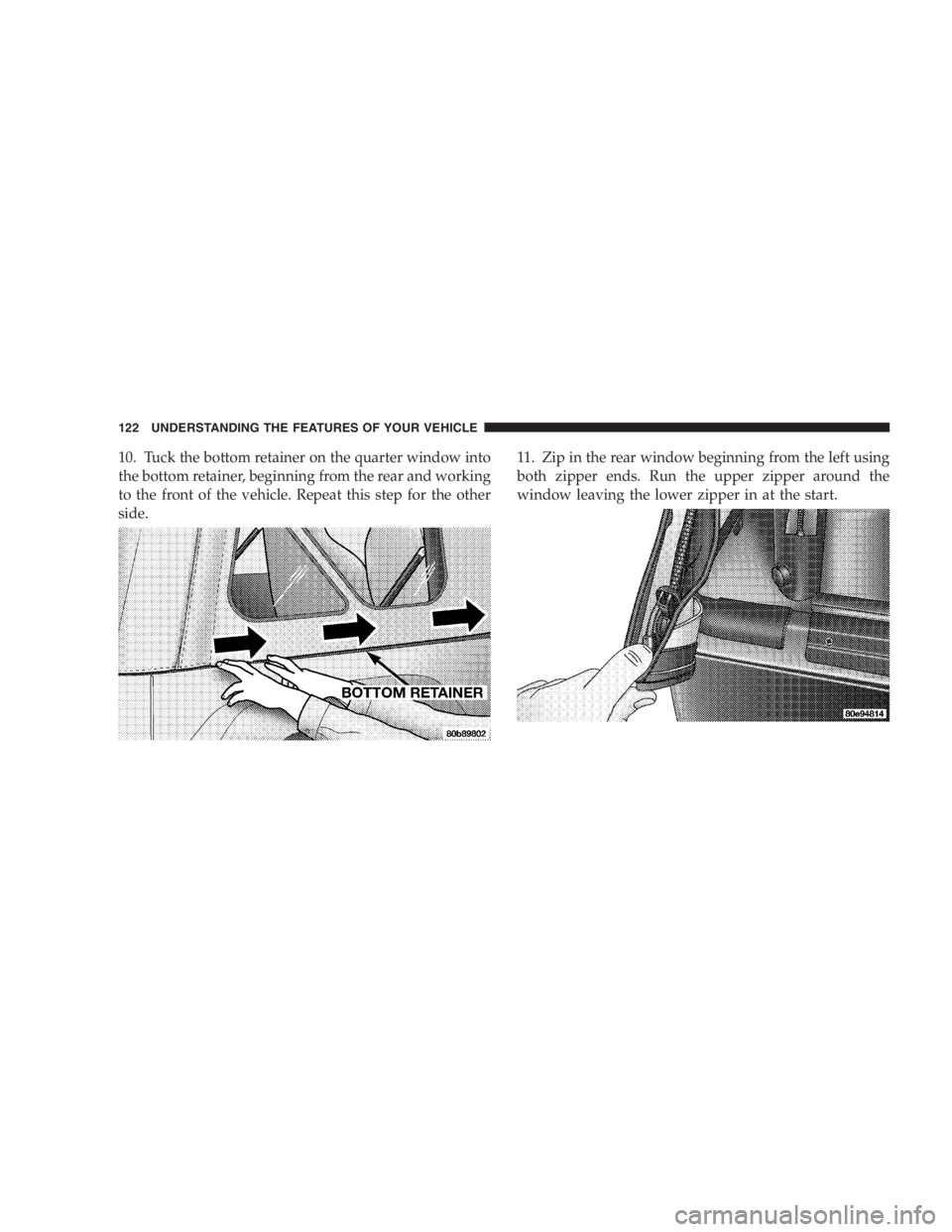
If the engine stalls or you lose headway or cannot
make it to the top of a steep hill or grade, never
attempt to turn around. To do so may result in
tipping and rolling the vehicle. Always back care-
fully straight down a hill in R (Reverse) gear. Never
back down a hill in N (Neutral) using only the brake.
Remember, never drive diagonally across a hill-always
drive straight up or down.
If the wheels start to slip as you approach the crest of a
hill, ease off the accelerator and maintain headway byturning the front wheels slowly left and right. This may
provide a fresh “bite” into the surface and will usually
provide traction to complete the climb.
Traction Downhill
Shift the transmission into a low gear and the transfer
case to 4L (Low) range. Let the vehicle go slowly down
the hill with all four wheels turning against engine
compression drag. This will permit you to control the
vehicle speed and direction.
When descending mountains or hills, repeated braking
can cause brake fade with loss of braking control. Avoid
repeated heavy braking by downshifting the transmis-
sion whenever possible.
STARTING AND OPERATING 205
Page 146 of 1056
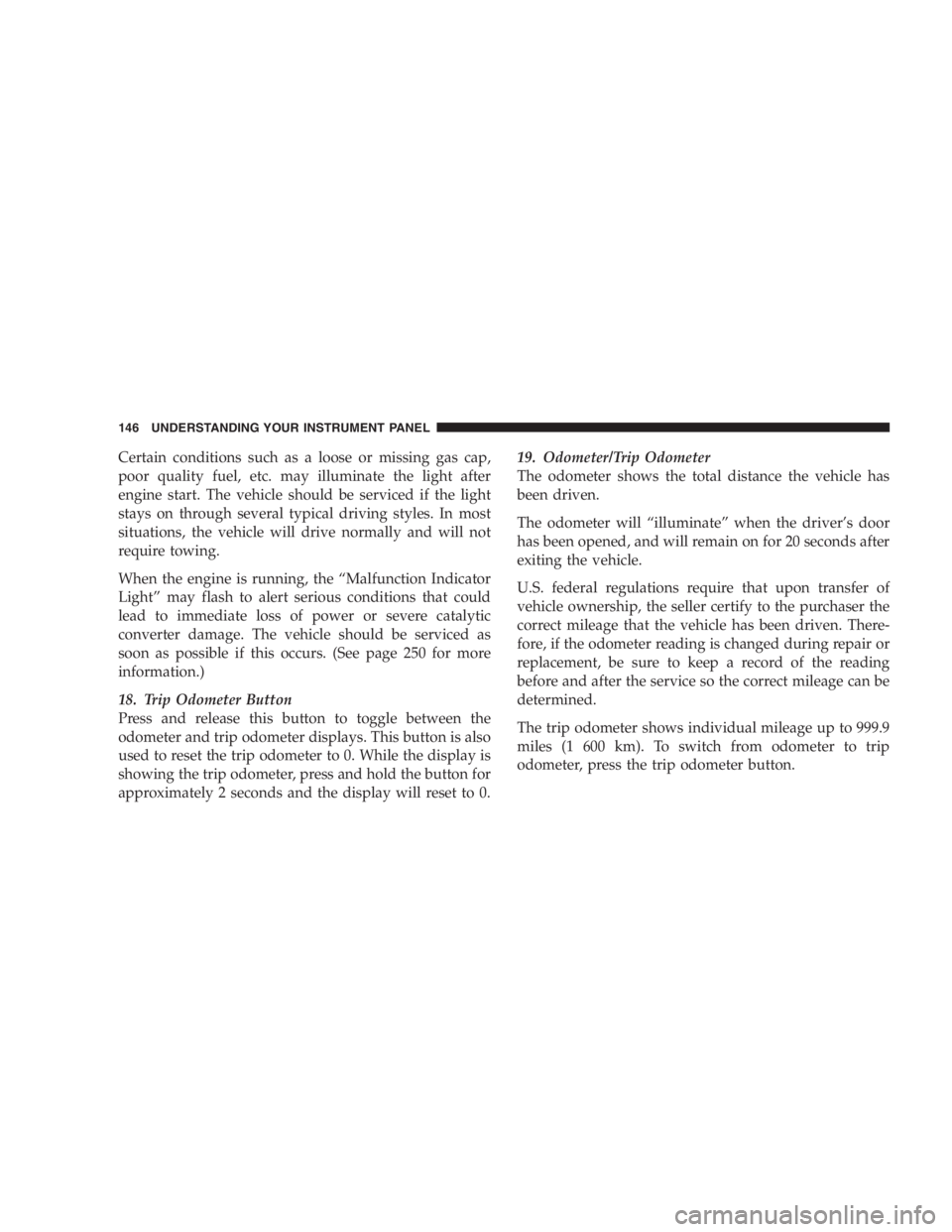
To avoid fuel spillage and overfilling, do not “top
off” the fuel tank after filling.
NOTE:When the fuel nozzle “clicks” or shuts off, the
fuel tank is full.
TRAILER TOWING
In this section you will find information on limits to the
type of towing you can reasonably do with your vehicle.
Before towing a trailer, carefully review this information
to tow your load as efficiently and safely as possible.
To maintain warranty coverage, follow the requirements
and recommendations in this manual concerning ve-
hicles used for trailer towing.Perform maintenance services as prescribed in the
“Maintenance Schedules” section. When your vehicle is
used for trailer towing, never exceed the gross axle
weight rating (GAWR) by the addition of:
•The tongue weight of the trailer.
•The weight of any other type of cargo or equipment
put in or on your vehicle.
Remember that everything put in or on the trailer adds to
the load on your vehicle.
The “D” Overdrive range can be selected when towing.
However, if frequent shifting occurs move the shift lever
to the next lower position to eliminate excessive auto-
matic transmission shifting. This action will also reduce
the possibility of transmission overheating and provide
better engine braking. Refer to “Transmission Shifting” in
this section for additional information.
STARTING AND OPERATING 229
Page 150 of 1056
Damage to the transmission may occur if the trans-
mission is shifted into P (Park) with the transfer case
in N (Neutral) and the engine running. With the
transfer case in N (Neutral) ensure that the engine is
off prior to shifting the transmission into P (Park)
(refer to steps7 – 8 above).
Page 154 of 1056
Driving with a hot cooling system could damage
your vehicle. If the temperature gauge reads “H”,
pull over and stop the vehicle. Idle the vehicle with
the air conditioner turned off until the pointer drops
back into the normal range. If the pointer remains on
the “H”, and you hear continuous chimes, turn the
engine off immediately, and call for service.
Page 171 of 1056
Overfilling or underfilling the crankcase will cause
aeration or loss of oil pressure. This could damage
your engine.
Change Engine Oil
Road conditions as well as your kind of driving affect the
interval at which your oil should be changed. Check the
following to determine if any apply to you:
•Day or night temperatures are below 32°F (0°C)
•Stop and go driving
•Extensive engine idling
•Driving in dusty conditions
•Short trip driving of less than 10 miles (16.2 km)
Page 175 of 1056
Damage to the catalytic converter can result if your
vehicle is not kept in proper operating condition. In
the event of engine malfunction, particularly involv-
ing engine misfire or other apparent loss of perfor-
mance, have your vehicle serviced promptly. Contin-
ued operation of your vehicle with a severe
malfunction could cause the converter to overheat,
resulting in possible damage to the converter and
vehicle.
Page 178 of 1056
The air cleaner can provide protection in the case of
engine backfire. Do not remove the air cleaner
unless it is necessary for repair or maintenance.
Make sure that no one is near the engine compart-
ment before starting the vehicle with the air cleaner
removed. Failure to do so can result in serious
personal injury.Battery posts, terminals, and related accessories con-
tain lead and lead compounds. Always wash hands
after handling the battery.
